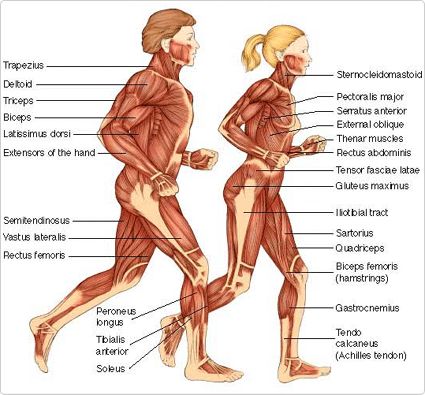RON'S BLOGGIN'S
FOOTBALL
Good Weight Training Habits
© Ronald J. Parise 2006
|
Weight training in the off-season should be a part of every athlete’s physical training program to improve performance during the season. The goal is to increase overall body strength, speed, endurance, muscle mass and bone density, which will also help reduce the risk of injury. Weight training can also be done during the season, but care must be taken on game days. Getting into a training schedule in the off-season is a first step; training during the season can be considered later on. Outlined here are the main concepts of starting and maintaining a good weight training program. There is a general mix of rules and work habits, but lifting weights is a training routine that requires extreme discipline. And when performed properly, the psychological concentration and discipline required to be successful are as rigorous as any martial arts regimen needed to get the body ready for exercise and training. Therefore getting “psyched” to weight train or lift each workout day should be part of your routine.
Lower back exercises are not specifically described here because most exercises use the lower back in some form, and typically the main concern with the lower back is keeping it stretched out and loose. Plus, part of the lower back includes the Gluteus maximus (butt) and the hamstrings, which are already being worked. That is why it is very important to include stretching of the lower back as part of your warm-up routine because it includes so many different muscle groups that must be kept loose while working out. Those athletes wishing to include lower back lifting can add the Dead Lift as part of their routine. Also Bent-over Rowing and/or Stiff-Leg Bend Over can be done. The Stiff-Leg Bend Over is done with the barbell resting on shoulders, then you lean forward as far as you can, or parallel with the ground, bending at the waist to work the lower back. The knees can be locked or slightly bent; I prefer slightly bent. Psych yourself each day you go into the weight room, especially on days when you do not feel like weight training. Almost always you will feel better as you get into the workout and you get a natural endorphin high from the workout regimen. To put yourself into a proper competitive state of mind, remember, the athlete across from you next season won’t have skipped the day you decided to be lazy, perhaps having the competitive edge. Don't give him that edge! There are certainly many different exercises that can be done in the weight room; therefore consider strengthening groups of muscles, depending on your sport. For football all muscle groups should be strengthened to improve performance and reduce injuries. The three groups are: upper body (neck, traps, shoulder, chest and arms; mid body (abs and back); and lower body (quads, hamstrings and calves). The absolute minimum workout routine should include the following: Stretch, bench press, dips, standing flies, front upright rowing, behind neck pull downs, curls, triceps extension, quadriceps extension, leg curls, leg press, calf raises, and necks. This would include those athletes participating in other sports in the football off-season. Those athletes not participating in any off-season sport should adopt a running routine. The following minimum running program should be used: Stretch, jog ˝ mile to warm up, run two 100m sprints, four 60m sprints, eight 40m sprints, two 100m sprints, and jog 1 mile to cool down. Running can be done every day, or Monday, Wednesday, Friday after weight training, or Tuesday, Thursday, Saturday. Again, your commitment in the off-season will determine how well you do during the season. Remember, you are only a student once in high school and get the chance at playing sports. Make the most of it. Get yourself in top physical condition to improve your performance on the field, reduce your chance of injury and have the most fun possible. |
| HOME | EDUCATION | GOVERNMENT | HEALTH | LEVITY | PC - NOT! | RAISING CHILDREN | SCIENCE/TECHNOLOGY | SPIRITUAL | FAQ | CONTACT RON |
RON'S BLOGGIN'S On the World Wide Web • Connecticut • U.S.A. • Earth • Beyond To Contact Bloggin' Ron • • • ron@ronblogs.com Site Design: rjparise@hotmail.com |
